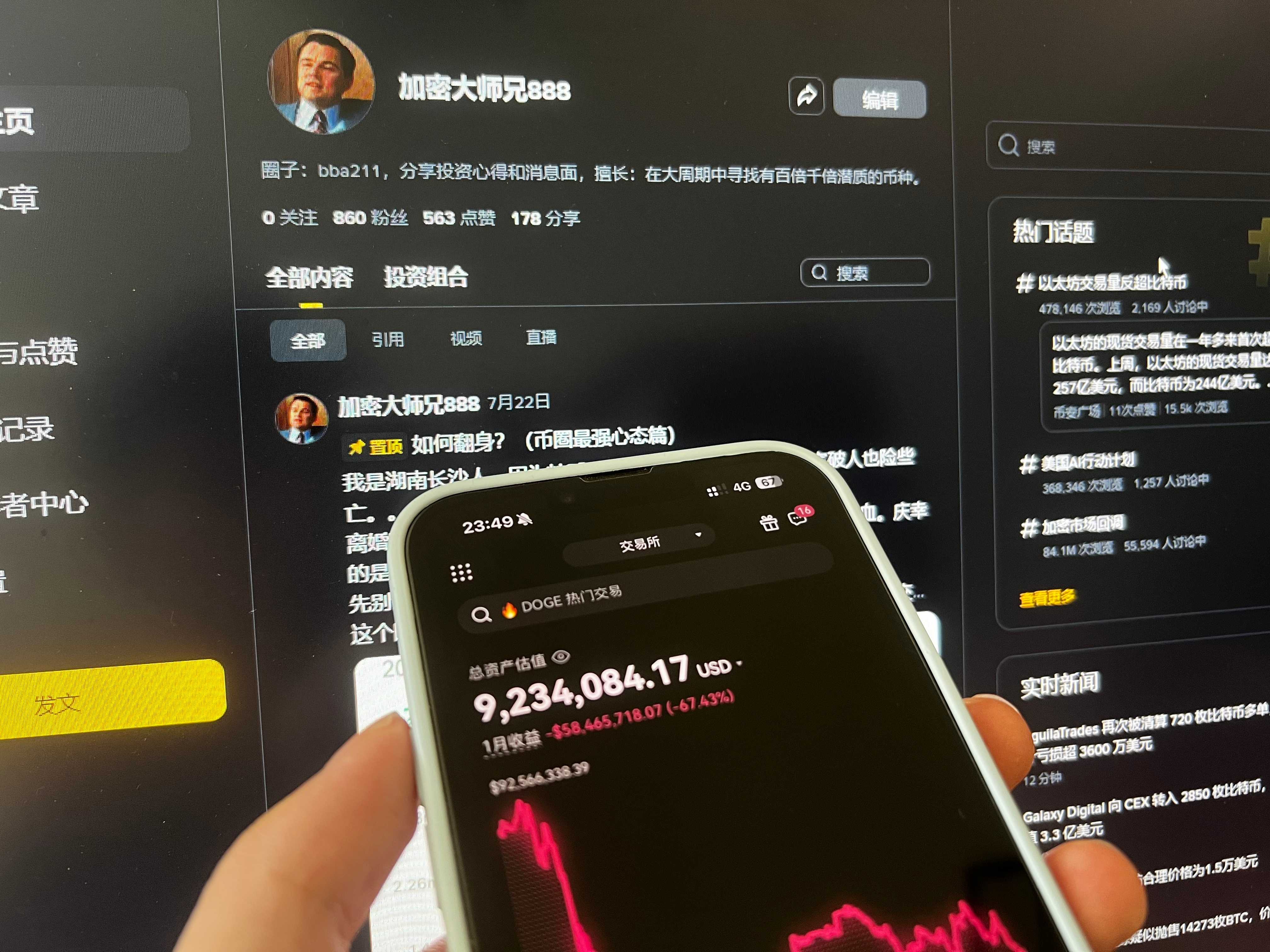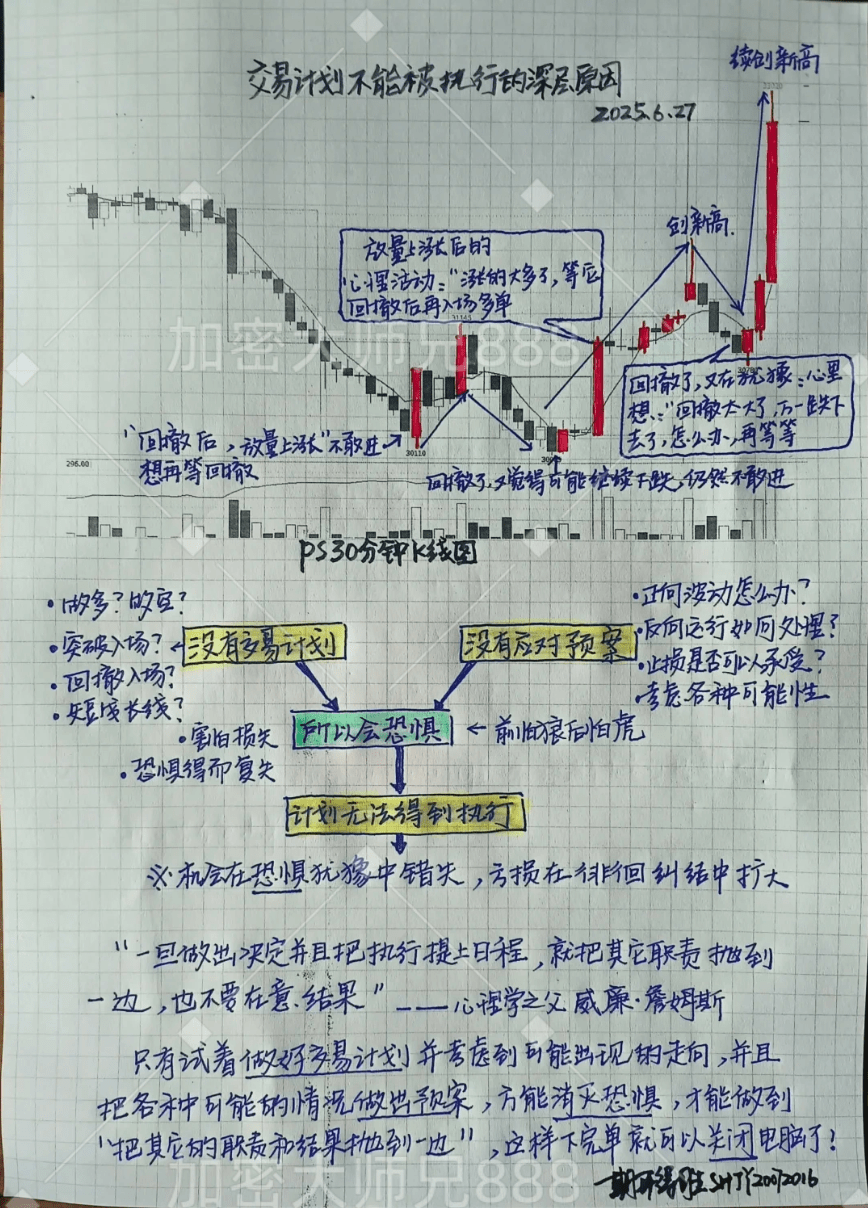When I entered the market with $6,000, I couldn’t even read K-lines; now my account balance has exceeded $50 million. Looking back, the real barrier in crypto is not how much capital you have, but whether you can use rules to lock in human greed and fear. Today, I have broken down the eight practical iron rules, and understanding them will at least save you from three years of detours.

1. Capital management is the lifeline: five-part capital allocation method + 10% stop loss line.
When I first entered the market, I made the dumbest mistake: I put all $6,000 into altcoins, panicked and cut losses when it dropped 15%, leaving me with only $4,800. Later, I realized that the first rule of survival in the crypto world is 'to stay alive.'
I now divide my capital into five parts, using only one part for trading at a time. Even if I have five consecutive stop losses, I only lose half of my capital. As long as I catch one doubling market, I can fully recover. The key principle is the '10% stop loss rule' — no matter how optimistic I am about a coin, if it falls below the stop loss line, I cut it immediately and never comfort myself with 'it will bounce back.' Last year, when SOL dropped from $200 to $180, I liquidated according to my discipline and avoided the later drop to $80.
Remember: one day in crypto is like a year in the stock market. Here, preserving capital is 100 times more important than making quick money.
2. Eight ironclad rules of trading: use rules to counter human nature.
1. Stop trading after consecutive losses; don’t become a slave to your emotions.
When I first started trading contracts, I lost $800 due to two consecutive stop losses. In a moment of impulse, I increased my leverage, resulting in liquidation and losing everything. Later, I found out that 78% of liquidations occur during impulsive trades after consecutive stop losses.
I have now set up a 'dual stop loss circuit breaker mechanism': if I have two consecutive stop losses, I will forcibly close the software and spend half an hour reviewing my trades. If I can’t find the problem, I’ll stay out of the market for a day — the market never lacks opportunities, but without capital, even the most abundant opportunities have nothing to do with you.
2. Never exceed 10% of your position, leverage is a knife, not a sword.
A heartbreaking statistic from a certain platform: 92% of users who fully invest in a single trade will go to zero within 3 months. With 10x leverage, a 5% fluctuation can turn you to ashes. I’ve seen the worst cases: someone invested $50,000 fully in altcoins, boasted about a 5% rise with a screenshot, but when it fell by 5%, they held on and couldn’t bear to cut losses, ending up with only $1,000 half an hour later.
My iron rule: with a capital of $50,000, I will never open a position exceeding $5,000. Even if I miss 10 market opportunities, as long as I avoid one liquidation, I have outperformed 90% of people.
3. Trading against the trend = suicide; don’t go against a one-sided market.
Last week, Bitcoin dropped 15% in 4 hours. A group of people in the community shouted 'buy the dip,' and as a result, they were liquidated 3 times in 3 hours. A simple way to judge a strong trend is: if the 1-hour chart shows five consecutive K-lines in the same direction and the moving averages are diverging, then follow the trend or stay out of the market; don’t be the fool trying to stop a runaway train.
Last year, Ethereum rose from $1800 to $4000. I only went long and never shorted, even during pullbacks, I resisted the urge to short and made a steady profit of three times.
4. Don’t enter a trade with a risk-reward ratio of less than 2:1; don’t be the fool who 'earns small and loses big.'
The biggest pitfall for retail investors: run after earning $1,000, but only cut losses after losing $2,000; in the long run, you will definitely lose. Before I open a position, I always calculate: if my stop loss is $500, my take profit must be at least $1,000; if I can’t reach this ratio, I will resolutely avoid it.
Last year when SOL was at $100, I calculated a stop loss at $95 and a take profit at $105, with a risk-reward ratio of 1:1, and decisively gave up. When it pulled back to $90, I calculated a stop loss at $85 and a take profit at $100 (risk-reward ratio 3:1) before entering the market, and made a steady profit of $1500.
5. Frequent trading = working for the exchange; skilled traders wait for the right opportunity.
Data shows: ordinary users trade an average of 6.3 times a day, while the top 10% of profitable traders only make moves 2.8 times a week. I used to open 10 trades a day and paid a lot in fees, while my capital kept dwindling.
Now I only check the market twice a day (half an hour at the opening and half an hour at the close); 90% of the fluctuations are noise. Last year, Bitcoin was sideways for 10 days, and I didn’t open a single position. After the breakout, I made more in one trade than others made in 10.
6. Only trade coins you have thoroughly researched, earn money within your understanding.
When Dogecoin skyrocketed due to Musk's tweet, someone in the group followed the trend and got caught at the peak. They didn’t even understand Dogecoin’s market cap or chip distribution; how could they make money?
I now only trade 3 coins: Bitcoin, Ethereum, and SOL. I have thoroughly understood their volatility patterns. I won’t touch unfamiliar coins, no matter how strongly they rise — money earned through luck will eventually be lost through skill.
7. Holding onto a position is like walking towards the abyss; if you’re wrong, admit it.
The cruel truth of the leveraged market: with 10x leverage, a 5% floating loss can turn into liquidation. Someone went long on Ethereum, set a stop loss at $3,000, and when it dropped to $2,900, they withdrew the stop loss and held on, only to see it drop to $2,500 and get liquidated, losing $200,000.
I always set a stop loss when I open a position; if it hits, I cut it. A 5% stop loss is always better than a 100% loss from liquidation — as long as you’re alive, you can earn it back next time.
8. Withdraw half of your capital after making a profit; treat the rest as 'play money.'
Before, if I made $50,000, I would get carried away, fully investing in altcoins, and within three days, I would lose all my profits and even owe $20,000. Now, I immediately withdraw 50% of my profits to my bank account, treating the rest as 'play money,' which stabilizes my mindset.
Three, finally I want to say
Contracts are not gambling; they are a probability game with controllable risks. The core of these eight iron rules is simple: use rules to control human weaknesses. If you manage stop losses, control positions, follow trends, and wait for opportunities, you have already avoided 90% of loss traps.
Remember: the winners in the crypto world are not those who predict the market best, but those who control risk best. Minimizing losses is profit; staying alive allows you to wait for real opportunities.

If you are also a tech enthusiast feeling helpless and confused in trading, and want to learn more about crypto-related knowledge and cutting-edge information, click on my profile to follow me, and you won’t get lost anymore! @加密大师兄888 Seeing the market clearly gives you the confidence to act. Steadily making profits is far more realistic than fantasizing about getting rich.


